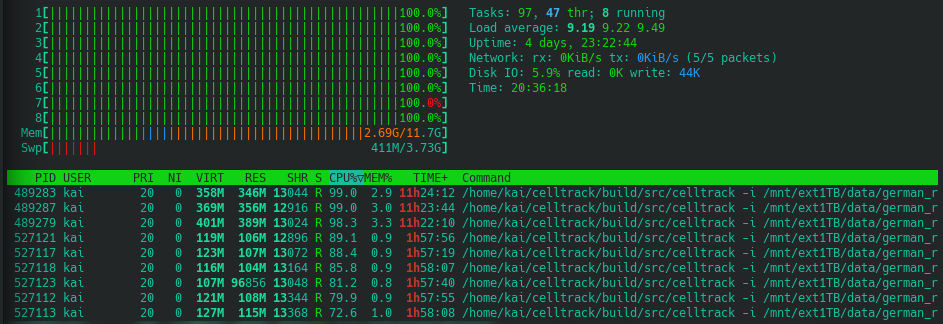So, I downloaded the 20-year radar data set (Mar to Nov) from the German meteorological service (DWD). It contains about 1.5 million individual radar-derived precipitation fields – one every 5 minutes. And, I was very excited to run a rain cell tracking on it. After handing in my PhD thesis, I was going for a short trip to visit family and friends in Germany. Fortunately, I have a home server and I decided to let it do the heavy work while I am on holidays. It took the full ten days of my absence plus two extra days for the 8-core Intel CPU machine to process all data. So, let’s see how I did it.
This post is part of the germanRADARanalysis project.
Continue reading “Apply rain cell tracking to 20 years of rain radar data over Germany”
